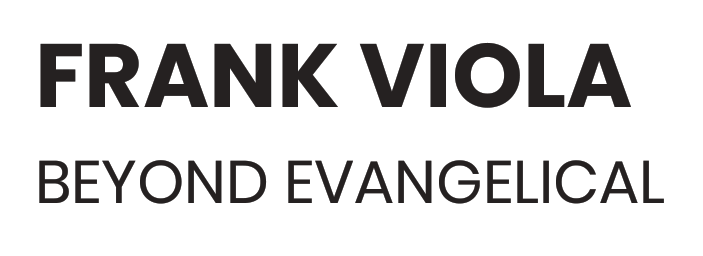Welcome to another Thursday UNFILTERED blog post, the only blog that wants you to know what when your pastor asks you to respond to the text during his sermon, he’s not referring to your smart phone.
If you’ve been consuming my work for any length of time, you know that the Lord often uses observations of the natural world (music, film, biology, anatomy, etc.) to provide precious insights into the kingdom of God. Today’s article is a fresh example.
Prominent physician and longevity expert Peter Attia’s has come up with a three-stage framework for medicine. Attia observes that medicine evolved from “let’s randomly cut stuff out and hope for the best” to something far more useful.
When I read Attia’s framework, suddenly the thought hit me that his framework works perfectly to describe how reading and studying the New Testament has evolved. And how my upcoming book fits into it.
Before I give you the application to the New Testament, here’s Attia’s medicine framework with my own comical spin:
Medicine 1.0 (ancient times to the 19th century) was basically ancient doctors playing medical roulette. Wanna cure a fever? Here’s some bloodletting! Got a problem? Chop it off! Spoiler alert: Most of their “treatments” were about as effective as using a fork to fix a laptop.
Then Medicine 2.0 (19th century to the present) showed up and was like, “Hey, maybe we should use science instead of wild guesses.” Doctors started understanding germs, treating symptoms, and not just randomly removing body parts.
Revolutionary, right? Yes, but the focus is on treating symptoms, not causes. The medical industrial complex still operates in Medicine 2.0, and most doctors today are still hanging out in this zone.
Medicine 3.0 is the cool kid on the block. It’s all about prevention: eating right, moving your body, sleeping enough, and not pumping yourself full of garbage. It’s proactive healthcare instead of reactive panic.
Attia is one of the leading experts of Medicine 3.0.
Now here’s where my “revelation” comes in. I suddenly realized that New Testament studies has followed a weirdly similar path. So I coined the following framework.
New Testament 1.0 (4th century to the 16th century) was translation bootcamp. “Let’s get this Greek text into languages people actually speak!” Groundbreaking stuff for its time, but still pretty basic.
New Testament 2.0 (16th to 19th century) was where scholars went full detective mode. Textual Criticism, Historical Criticism, Source Criticism, Form Criticism, Redaction Criticism, Literary Criticism, Social-Scientific Criticism, Narrative Criticism, and Reader-Response Criticism.[i]
Basically a bunch of nerdy ways to dissect ancient texts and figure out what the heck it was saying by the use of historical tools and the original meaning of Greek words. These folks were the original academic fact-checkers. This approach still prevails today.
That brings us to what I call New Testament 3.0. This is where things get really interesting.
Instead of translating or analyzing tiny pieces (verses), we are now looking at the entire New Testament as one epic, interconnected story.
It’s like going from examining individual movie scenes to understanding the whole narrative arc.
While New Testament 3.0 incorporates both New Testament 1.0 and 2.0, it goes much further and puts us on a different mountain from which to view Scripture.
My upcoming book, The Untold Story of the New Testament Church: Revised and Expanded, is a major contribution to New Testament 3.0 (as I call it).
The takeaway: Whether it’s medicine or biblical studies, we’re constantly upgrading how we understand complex systems. And that’s pretty awesome if you ask me.
The challenge is to stay current, refusing to remain stuck in 1.0 and 2.0 – for either medicine or the Bible.
So if you want to join me on the New Testament 3.0 journey, WAIT to get your copy of the book on March 4th.
Again, I’m giving away 7 bonuses to everyone who orders it during release week, so don’t pre-order it.
By the way, I explain New Testament 1.0, 2.0, and 3.0 less casually (and without the humorous remarks) in an audio interview that will drop on the book landing page on March 4th. I think you’ll love it.
Until next week.
Your brother,
fv
NOTES
[i] These critical approaches predate New Testament studies and have long been used by classical historians to analyze ancient texts across various cultures. Here’s a modern example of each kind of criticism put simply. Think about studying an old family recipe. Specifically, your great-grandmother’s lasagna recipe:
– Textual Criticism: Looks at all the different copies of the recipe to figure out which one is closest to great-grandma’s original
– Historical-Critical Method: When was it written and what was cooking like back then?
– Source Criticism: Which cookbooks did it come from originally?
– Form Criticism: Is it written like a fancy restaurant recipe or a casual family one?
– Redaction Criticism: How has it been changed over time?
– Literary Criticism: How is the recipe written and organized?
– Social-Scientific Criticism: What ingredients were available back then?
– Narrative Criticism: How does the recipe guide you through the cooking process?
– Reader-Response Criticism: How do different family members interpret and adapt it?

